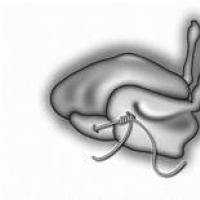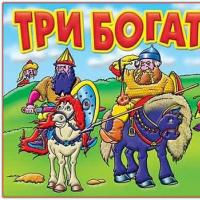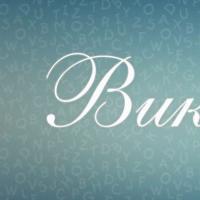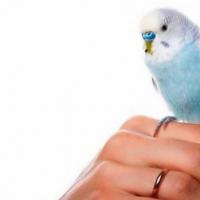Sea battle of Saltan and the pirates.docx - Summary of the lesson in fine arts "Sea battle of Saltan and the pirates" (4th grade). Sea battle: MMORPG for pirates Izo sea battle of Saltan and Pano pirates
2nd grade
Lesson topic. "SEA BATTLE OF SALTANA AND THE PIRATES." EXPRESSING INTENTIONS THROUGH DECORATION
Goals: teach to understand the symbolism of shape and color in the visual arts and in life.
Tasks: distinguish (equip) fleets with color and elementary symbols;
introduce works visual arts, literature;
develop imagination; cultivate accuracy, practice brush technique, and the ability to produce composite colors.
Type of occupation : decoration with color, symbols expressing intentions - good or evil.
Lesson equipment : gouache, large and thin brushes, glue, pins.
Visual range : presentation.
Literary series : A.S. Pushkin "The Tale of Tsar Saltan".
Musical series: song - screensaver for the TV show "Visiting a Fairy Tale".
Lesson Plan .
Class organization.
Conversation on the topic of the lesson: how can jewelry “speak”? (presentation).
Conversation “Remember the fairy tale...” (presentation).
Conversation – discussion “How to decorate ships.”
Task: decorate two fairytale fleets - good and evil. How to compose a color and how to use a brush.
Independent work of students.
Lesson summary. Analysis of completed work.
Work evaluation.
Homework.
During the classes
1. Class organization.
Checking absences and readiness for class.
2. Conversation on the topic of the lesson: how can jewelry “speak”? (presentation).
Slide No. 1
The topic of today's lesson is"Sea battle between Saltan and the pirates." Expressing intentions through decoration.
How can they"speak" decorations?
Slide No. 2

For example, in these smooth shapes and patterns there is more calm and kindness.
Slide No. 3

And these sharp forms seem angry and prickly.
Slide No. 4

These colors are cheerful: they have a lot of sunshine.
Slide No. 5

But here the bright colors seem disturbing because they are surrounded by dark ones.
3. Conversation “Let’s remember the fairy tale...” (presentation).
Slide No. 6 – 8
In order for us to work further, we will remember the beloved “Tale of Tsar Saltan” by the world-famous Russian poet Alexander Sergeevich Pushkin and look at the illustrations of the no less famous Russian artist Ivan Yakovlevich Bilibin.



Slides No. 9 – 17









4. Conversation - discussion “How to decorate ships.”
Now let's dream up a little. Imagine that Saltan’s fleet met at sea with an armada (fleet) of evil and predatory pirates. How could their ships be decorated? (Children’s answers and teacher’s generalization.)
Well done boys. Indeed, each fleet should have its own symbols: for Saltan it is the sun, a swan, flowers, and for the robbers it is a kite, snakes, dragons, monsters. Choose jewelry that would express good and evil intentions.
Slides No. 18 - 23






And now the mystery.
Slide No. 24

5. Task: decorate two fairytale fleets - good and evil. How to compose a color and how to use a brush.
Before practical work, let's remember the basics of mixing colors, that is, obtaining composite colors from the main ones.
View presentation slides.
Slides No. 25 – 28




Brush technique.
Slides No. 29 – 35







6. Independent student work .
Children are given blanks (boat, sail).
During independent work, a melody and a song sound - the screensaver for the TV show “Visiting a Fairy Tale.”
Slides No. 36 – 38



By the end of the lesson, the ships and sails are fixed in their places on the sheet (blue).
The result is two completely different fleets. One is cheerful, joyful, the other is scary, gloomy. You can give names to the ships (write in small block letters).
7. Lesson summary.
Analysis of completed work.
Conclusion: With the help of color and shape, the artist can show the hero’s intentions and express his thoughts and feelings through the image.
8. Evaluation of work .
9. Homework.
Slide number 39

Self-analysis of the lesson.
This lesson relates to the topic “What art says” and is the first in the final stage.
The purpose of this lesson is to teach children to understand how different intentions (bad or good) can be expressed through various shapes and colors.
The structure of the lesson is aimed at developing subject and
key competencies. Each stage was aimed at achieving these tasks
lesson.
The following competencies were used in the lesson.
− subject - children worked with paints and brushes, repeated the technique
mixing paints and obtaining composite colors;
− educational and cognitive - children got acquainted with the artist Bilibin’s illustrations for “The Tale of Tsar Saltan” and remembered the content of Pushkin’s fairy tale, memory, attention, and thinking were involved here;
Informational - children received information that shape and color can express a person’s intentions;
− personal - children used the knowledge they had previously received (
accuracy in performing painting work and covering with color in
painting technique).
The result is the creation of two works with completely different intentions.
The results of the lesson allow us to say that the students of the class coped well with the task, and during the lesson they improved various competencies.
PUBLIC LESSON
teachers primary classes
Abrahamyan Irina Nikolaevna
on the topic: “The sea battle of Tsar Saltan and the pirates.”
Expressing intentions through decoration.
Lesson topic:"Sea battle between Tsar Saltan and the pirates." Expressing intentions through decoration.
Type of occupation: individual - collective work - decorating fleet ships with paints or colored paper (appliqué) with symbols expressing good or evil intentions.
Goals and objectives: to give an idea of the symbolism of images, of decoration as a method of expressing intentions, feelings, mood, and familiarization with works of fine art.
Meta-subject goals:
1) Cognitive universal educational actions:
Learn to identify the features of objects in the process of examining them (observation);
Learn to reproduce from memory the information necessary to solve a problem educational task;
Learn to understand color gradation;
Learn to find the required color using gouache paints, watercolors, using the “whitening” technique;
Learn to compare the received color scheme with natural objects or works of fine art.
2) Regulatory universal educational actions:
Learn to plan a solution to a learning task: build a sequence of action algorithms;
Learn to adjust your activities: make changes to the process taking into account difficulties and errors that arise; outline ways to eliminate them;
Learn to analyze the emotional state obtained from successful (unsuccessful) activities, assess their impact on your own mood;
Learn to evaluate and compare the results of activities (someone else’s, your own) with a model;
Learn to assess the level of proficiency in a particular educational activity
(answer the question “what do I not know and cannot do?”).
3) Communicative universal educational activities:
Learn to perform creative work using the information received in the lesson;
Learn to express your own opinion when analyzing the works of your comrades, “maintain” the logic of the narrative, and present convincing arguments.
Personal goals:
To develop an interest in the culture and history of one’s people and native country;
Learn to express a positive attitude towards the learning process (show attention, surprise, desire to learn more);
Develop the ability to evaluate your own educational activities: your achievements, independence, initiative, responsibility, reasons for failures.
Lesson equipment:
For students– watercolor, gouache, colored paper, scissors, glue, pencil.
For the teacher- visual illustrations, underpaintings for team work, templates of ships and sails.
Visual range: reproductions of works by artists - N. Roerich “Overseas Guests”, illustrations by I. Bilibin, B. Zvorykin for “The Tale of Tsar Saltan”, drawings of pirate “evil” ships, ships of “good” ones.
Literary series:“The Tale of Tsar Saltan” by A. S. Pushkin.
During the classes
Class organization.(1 slide)
Hello guys. We tune in to the working wave and strive along the steps of knowledge to new discoveries. Our motto:
Today we are working in groups. We repeat what we know and consolidate, and strive to learn something new.
I OBSERVE - I NOTICE - I REFLECT - I CONCLUSION1. Self-determination for activity
Over the course of several lessons we worked on what topic? (topic “How does art speak?”) How, what techniques can an artist express feelings, mood, intention, character of what he depicts? (color) (If this is a person or an animal, then facial expressions, movement. If this is a landscape, nature, then the main thing in the artist’s painting color.(placards with these words are posted on the board))
2. Updating knowledge and recording individual difficulties(2 slide)
- Remember what genres are distinguished in fine art? ( landscape, portrait, still life.)
If you see in the picture
A river is drawn
Or spruce and white frost,
Or a garden and clouds,
Or a snowy plain
Or a field and a hut,
Required picture
It's called. . .
If you see in the picture
Cup of coffee on the table
Or fruit drink in a large decanter,
Or a rose in crystal,
Or a bronze vase,
Or a pear, or a cake,
Or all items at once,
Know what it is. . .
If you see what's in the picture
Is anyone looking at us?
Or a prince in an old cloak,
Or a steeplejack in a robe,
Pilot or ballerina,
Or Kolka is your neighbor,
Required picture
It's called. . .
Can you identify the names of the works presented here? (3 slide)
Well done. Now remember and list what types of fine arts you know? (painting, decorative and applied arts, graphics). Right.
But we will focus on only one of the genres. This is graphics. What is graphics? (drawing). (5 slide)
Conclusion: Graphics come in black and white and color. Graphic works are drawings, sketches, sketches, book illustrations, labels, newspaper and magazine cartoons, posters, posters, fonts for books.
Now, put your heads on your desks. Focus. Try to imagine what you heard. (recording noise and splashing water)
What sounds did you hear? What did you imagine? Describe.
(an audio recording of water splashing sounds, with the teacher’s voice in the background)
Sea element. Sea. It has always worried people. It attracted me with its mystery, strength and beauty. So we will go to the shores of the sea.
viewing pictures of sea coasts . (6-7 slide)
Is it possible to determine the author's mood by looking at color? (8 slide)
Today we need to learn another technique of artists.
Guys, I claim that we will be able to find out what technique we are talking about. But to do this, you need to think about the next task.
3. Designing a new way of doing things.
Localization of difficulties. Formulation of the problem. Lesson topic message.
- “In the distant kingdom, in the distant state...” - Which work usually begins with these words? (fairy tale)
(On the board there is a strip of whatman paper on which the sea is drawn and ships are attached white).
The wind blows across the sea
And the boat speeds up;
He runs in the waves
With full sails...
Which work are the lines from? (9 slide)
– Do you remember “The Tale of Tsar Saltan...” by A.S. Pushkin? Let's mentally transport ourselves to the fairy tale about Tsar Saltan. - How did people in the fairy tale cross the sea? (on ships) (10 slide) - Remember, Tsar Saltan’s fleet sailed to visit Prince Guidon? And since he was sailing to visit, he decorated his fleet. How could he decorate?
– Tsar Saltan’s fleet went to Tsar Guidon, but on the horizon the sailor notices the approach of another fleet. (11 slide)
- How, guys?
Do you think it is possible to determine which fleet is approaching: a fleet going to a holiday or a fleet going on an evil, dark deed?
To do this, let's look at the drawing. (12 slide)
What is shown here? (ships, fleet, two different fleets...)
Why did you decide that these are two different fleets? ( this can be seen in the sails, this can be seen in the decoration of the bow of the ship, in the cannons on the decks...)
Absolutely right, which means there is another technique for the artist to express intentions, What do you think this is?
This decoration. The decoration characterizes its owner, reveals his ideas about beauty and can even express his character.
(placards with this word are posted on the board)
Soon the fairy tale is told, but not soon the deed is done. Let's go back to class and relax.
Physical education minute.(Perform together with the teacher.)
The wind blows across the sea,
And the boat speeds up.
(Get up from your desk.)
He swam back first.
(Steps back.)
And then he swam forward.
(Steps forward.)
And he swam, swam along the river,
(Wave movements with hands.)
Getting into full swing.
(Walk in place.)
4. “Discovery” of new knowledge.”
So, how can you show in the figure intention? Color, decoration, movement.
If two different fleets meet at sea, what will happen? ? (the battle)
The topic of our lesson (I post it on the board)"Sea battle between Tsar Saltan and the pirates"
How to show this in motion? ( ships must sail towards each other)
– What do you guys think your task will be today?
The goal of our lesson - create the fleet of Tsar Saltan and the fleet of pirates who met at sea and are ready for battle. To do this, we will divide into pirates and the sailors of Tsar Saltan. . (I divide the class into two halves.)
An evil wizard worked here and erased all the paint from the ships. And now it is not clear where Tsar Saltan’s fleet is, where the pirate fleet is.
Now take each of your boats.
How could their ships be decorated?
– What can be depicted on the sails?
– What colors will we use for Tsar Saltan’s fleet? (Warm) (14 slide)
What symbols can show goodness?
What colors will we use for the pirate fleet? (cold) (15 slide)
What symbols can be used to show evil? (kite, pirates, skull and crossbones, dragon face, predator birds, monsters, snakes, sun, swan, heart, flowers, butterflies...)
Reading by heart 2 students
Come on, imagine how in the old days,
The ships went to robbery, to war.
Cannons on both sides,
On the sails there is either an eagle or a dragon.
The nose threatens with a grinning mouth
Whether it's a tiger, a lion, or something with teeth.
The flag flies with a black cross,
Flag with lightning, with a snake tail,
Draw a formidable ship on paper!
Now imagine a different ship
The sail sparkles above the wave...
Let the seagull soar on the flag,
After all, the flag speaks of peace.
There is a butterfly and a bee on the flag
Calling for good deeds...
Think about how to decorate your nose:
A mermaid with a mane of hair,
A dolphin with a nose like a needle -
Dolphins do not bring harm;
Dress the ship up like for a parade
You are in the most festive outfit.
5.Work on the task.
Independent work students.
So what are we going to do?
– Do you have any questions about the assignment? Let's get to work.
Music plays quietly while working.
Students are given ready-made sketches of ships and sails to cut out. Let's remember the rules for working with scissors.
Game “Clap, Stomp.
You remember the terms of the game. If I say correctly, then you clap your hands, and if I’m wrong, you stomp your feet. And so they began.
1. Hand the scissors to the other person with the “sharp” (blunt) end.
2. While working with scissors, you must not walk around the classroom.
3. “Hold” (don’t hold) the scissors close to your eyes.
4. When cutting, watch the fingers of your “right” (left) hand.
5.After working with scissors, do not leave them open.
6.Each instrument should have its own place on the desk.
(The rules are posted on the board). (16 slide)
Based on this, work begins on decorating ships in color using the appliqué technique. Before decorating the silhouette of the ship with color, children are asked to raise the boats up so that the two fleets sail towards each other. In other words, one group of schoolchildren has the bow of the ships facing to the right, while others face the bow to the left.
Having chosen the right color for the ship and the sail, we decorate it in accordance with the intention of the ship. The ship can be “good” or “evil”.
During work, the teacher helps students, gives individual advice, and assists in gluing ships (fleets sail against each other).
6.Reflection of activity. Lesson summary.
– What task did we set for our lesson? Have we dealt with it?
At the end of the lesson a miracle happens! The ships and sails that were completely identical (they all had the same white paper blanks) suddenly transformed into two contrasting fleets, two groups of people who have different intentions.
Were you able to express a person’s intentions through color and decoration?
And we did this with the help decorations and colors.
Let's summarize our work in class. (17 slide)
Complete the sentences:
1. I learned in class...
2. During this lesson I realized...
3. I want to praise...
4. I wanted to know...
7. Evaluation of student work.
Well done to all of you today! You worked very carefully, cleanly, beautifully. (18 slide)
The ships turned out wonderful. All groups tried to color and decorate the ships correctly. I give everyone a “5” for their work today.
Homework.
Find in books examples of decorative forms that, based on their silhouette, color, and the nature of the elements, could be attributed to the image of Tsar Saltan’s fleet and to the image of pirate ships. You can draw decorations for different fairy-tale heroes.
The lesson is over. Thanks everyone. Rest.
APPLICATION

The fleet of Tsar Saltan, the “good” fleet.

The pirate fleet, the “evil” fleet.

Sea Battle is an excellent browser-based MMORPG, where Caribbean landscapes, medieval-style forts and exciting battles on the high seas await you! You need to choose your hero from the 4 presented pirates, play both as a female character and as a male thug and decide which camp to join. Climb onto the ship and go on various quests: find out information from the inhabitants of the islands, sail out in search of adventure and fight sea monsters. Gain experience, fill your chests with gold, strengthen your morale and earn your reputation as the terror of the seas.
Description
The developers suggest not to waste time and immediately set sail, without tedious client settings and reading the rules. The browser implementation allows you to play naval battle even on weak computers, and registration does not take much time. Beautiful pirate girls will not let you go off course: from the first minutes you will receive tips on where to sail and what to do. And the auto navigation function will help you reach your destination in one click.
The game's cellular system is reminiscent of Heroes of Magic and Sword. To attack the enemy, you will have to swim to the permissible distance for the strike. The enemy may have assistants right in the midst of battle. The depths of the sea are full of surprises.
Powerful ships can attack from a great distance without wasting a turn moving closer to the enemy.

Every day new events appear in the game, for completing which you can get interesting prizes. Rewards received for battles can be spent on improving the ship, installing powerful cannons or strengthening the sides.
You won’t be bored: quests come one after another. Starting from simple ones: talking with someone, ending with sailing to battle with a mysterious sea reptile. For successfully completing tasks you receive gold, experience, reputation points and spirit.
The reserves of the latter determine the speed of your swimming. More precisely, the frequency of your movements. If your spirit is at zero, you will not be able to move through the watery depths for some time. We'll have to wait until it's replenished. At this time, you can take a break from the game and do mundane things, or buy a spirit for real money and rush towards adventure.

Reputation points are needed to buy yourself a title. Agree, being a baron is much more profitable than an ordinary pirate, not to mention the privileges of titled persons.
Starting from the tenth level, you will be able to study magic and use spells in battles that deal more damage than many cannon volleys, without requiring you to swim to the enemy.
The game turned out to be lively and interesting. Here you can enter into alliances with other players, improve your ship, and hire assistants. Every day new tasks await you. Sea travel requires careful use of resources, so you'll have to learn to budget if you want to be successful.
Class: 2
Target: teach students to see and understand what is depicted, decorated and built.
Tasks:
- Formation artistic culture students;
- Developing the child’s ability to perceive shades of feelings and express them in practical work;
- Education of moral aesthetic feelings.
Equipment:
- For the teacher: computer presentation ( Application ), ship templates, sample work.
- For students: paints, brushes.
Lesson structure
- Organizational part.
- Learning new material.
- Repetition.
- Practical work.
- Consolidation of the studied material.
- Lesson summary.
- Homework.
DURING THE CLASSES
1. – Hello, guys, I’m very glad to see you. Check if you have everything prepared for the lesson. Sit down.
2. (Application . Slide 1)
– The topic of today’s lesson is “Expressing intentions through jewelry.”
(Application . Slide 2)
– Objectives of our lesson:
- Get acquainted with the story of ancient sailing ships;
- Find out: is it possible to convey intentions through jewelry;
- Execute practical work
– Unfortunately, we do not know who invented the first boat. This happened so long ago that those times are called prehistoric. Modern historians believe that the most ancient people simply sailed on whatever came to hand. For example, on fallen trees.
-Have you swam on logs?
- Comfortable? Why?
“Gradually, people realized that if a tree was cleared of branches and hollowed out, it would float faster. This is how the first boats appeared.
One of the most ancient civilizations that we know is Egyptian. The only river that flows there and without which life in those parts would be impossible is the Nile. Only along this river was it possible to transport goods and people from the northern part of the Egyptian state to the southern. But on what? If you have ever had to solve a similar problem, then probably the first thing that comes to mind is a raft. A raft can be easily made and can carry a much heavier load than a boat. However, in Egypt, almost nothing except reeds and papyrus grows along the banks of the Nile. Papyrus is similar to ordinary sedge, which can be found in our area - grass is grass. But when this grass was collected, dried and tied into bunches, it turned out to be good material for building a raft. It could easily be controlled by one person with a long pole in his hands. True, pushing a raft with a pole during a multi-day journey is very tiring. We had to come up with something else.
– What do you think the Egyptians came up with?
- That's right, the Egyptians invented the sail - one of the greatest inventions of all time.
The rafts floated slowly. To swim faster, it was necessary to make the front part of the raft better able to overcome the resistance of the water. What emerged as a result was no longer a raft, but it was not a boat either. It already looked like a ship. And he got a bow, stern and sides. ( Application
. Slide 3) Egyptian ships, like rafts, were also initially made from papyrus.
In addition to the sail, the ancient Egyptians also came up with another necessary thing that a ship could not do without: a rudder.
The ships were not only merchant, but also military.
– What do you guys think is the difference between a merchant ship and a warship?( Application . Slide 4)
– Compared to narrow and long warships, merchant ships were heavier and clumsier. In the bow of the warship there was a “beak” - a ram, and above it there was an image of an animal’s head: a crocodile, a ram.
At the end of the first millennium AD, the famous Vikings made themselves known. They lived in Northern Europe, where it was cloudy, windy, cold and almost nothing grew except trees.
(Application . Slide 5)
– Look at the Viking ship, guys, do you think these people were friendly or not? Justify your answer. Naturally, they wanted to see how people lived in other places, and at the same time find out whether they could be properly robbed if they lived richer. The Vikings understood perfectly well that a frightened enemy is an almost defeated enemy. Therefore, they decorated the bows of their ships with images of grinning dragons and other terrible wickedness, and on the sides they strengthened threateningly painted shields.
– The inhabitants of the Russian north – the Pomors – have always been good sailors. No worse than the Vikings. ( Application . Slide 6)
– What are Pomors like, in your opinion? They just didn’t like to kill and rob, but were engaged in trade and fishing of sea animals and fish. Now turn your attention to the board.
(On the board there is a strip of whatman paper on which the sea is drawn and white ships are attached).
The wind blows across the sea
And the boat speeds up;
He runs in the waves
With full sails...
– Tsar Saltan’s fleet went to Tsar Guidon, but on the horizon the sailor notices the approach of another fleet.
– What do you guys think, is it possible to determine which fleet is approaching: a fleet going to a holiday or a fleet going on an evil, dark deed?
– What can be depicted on the sails?
3. – What colors will we use? Warm ( Application . Slide 7) and cold ( Application . Slide 8).
4.
“And an evil wizard worked here and erased all the paint from the ships.” And now it is not clear where Tsar Saltan’s fleet is, where the pirate fleet is.
– What do you guys think your task will be today? That's right, you need to restore the paint.
- Come on, half the class will restore the ships of Tsar Saltan, and the other half will restore the ships of the pirates. (I divide the class into two halves.) Now take each of your boats.
Physical exercise.
(children perform movements after the teacher)
I wanted to draw
But I don't know how to start.
Paints - masks, where are you?
I'll take three basic colors,
These paints are not simple:
All others are made of them.
– Where are these main colors? (Children name the main colors)
(Application . Slide 9)
- Look at the screen, guys, and tell me where whose fleet is and explain.
Come on, imagine how in the old days,
The ships went to robbery, to war.
Cannons on both sides,
On the sails there is either an eagle or a dragon.
The nose threatens with a grinning mouth
Whether it's a tiger, a lion, or something with teeth.
The flag flies with a black cross,
Flag with lightning, with a snake tail,
Draw a formidable ship on paper!
Now imagine a different ship
The sail sparkles above the wave...
Let the seagull soar on the flag,
After all, the flag speaks of peace.
There is a butterfly and a bee on the flag
Calling for good deeds...
Think about how to decorate your nose:
A mermaid with a mane of hair,
A dolphin with a nose like a needle -
Dolphins do not bring harm;
Dress up the ship like a parade
You are in the most festive outfit.V. Kalinkin
– Do you have any questions about the assignment? Let's get to work.
5. Our ships are ready, let's see what we got? (we return the restored ships to whatman paper)
- Look, have you restored Tsar Saltan’s fleet correctly? What about the pirate fleet?
– How can you convey intentions through jewelry?
- Well done, you coped with the task remarkably well.
(Application . Slide 10)
– And now we will turn to the “Dictionary of Terms” and try to explain the following words:
- Good
- Beautiful
- Ugly
- Courage
- Modesty
- Sympathy
6. - Let's summarize our lesson. What new did you learn in the lesson?
 Types of poultry dressing. Profession: cook. Tutorial: Putting poultry into a pocket
Types of poultry dressing. Profession: cook. Tutorial: Putting poultry into a pocket The main activity according to OKVED What type of activity to choose for individual entrepreneurs
The main activity according to OKVED What type of activity to choose for individual entrepreneurs Development script on a military-patriotic theme Production on a military theme script
Development script on a military-patriotic theme Production on a military theme script What does the name Victor mean for a boy?
What does the name Victor mean for a boy? Corella parrot school - learning to speak, sing and dance
Corella parrot school - learning to speak, sing and dance Rules for filling out the safety log
Rules for filling out the safety log Business Analyst - IT1410: Software Requirements Development - Business Informatics
Business Analyst - IT1410: Software Requirements Development - Business Informatics